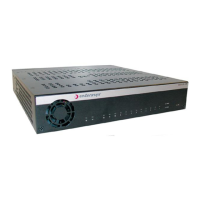Page 2
Security
• Business-oriented, policy-based security* by user, application,
protocol, port, or VLAN
• Multiple user authentication methods via IEEE 802.1X, Web portal,*
and/or MAC address
• Full support, via optional policy license, for port-based policies*
(PC+Phone)
• Acceptable use policy enforcement* when deployed with Enterasys
Network Management Suite (NMS)
• Rapid detection, isolation and remediation of threats* when deployed
with Enterasys NMS and Intrusion Prevention System (IPS)
• Proactive protection services:
– MAC address lockdown / lockout
– Worm & virus quarantine via optional policy license
– Source port pairing
– ARP broadcast protection
– BPDU port protection
– DHCP service protection
Performance
• Aggregate capacity: D2 performs at wire speed per port and provides
switching capacity up to 17.86 Mpps throughput and 24 Gbps
bandwidth
• Address table size: up to 16,000 addresses are supported
• Hardware queues: 8 hardware queues per port are supported
Management
• Secure management: authenticated and encrypted SNMPv3 support
in addition to SSHv2, Secure Copy, Secure FTP and SSL
• Policy support: the D2 supports the creation of 100 unique policy
rules and 10 unique masks per port
• Port mirroring: mirrors ingress/egress traffic from switch port(s)
to a local or remote device for further traffic analysis or
compliance purposes
• RMON: provides advanced monitoring and reporting capabilities for
statistics, history, alarms, events, filter and packet capture. Note:
packet capture is sampling only; packet capture/filter sampling is
disabled by default and cannot be enabled on the same interface
concurrently with port mirroring
• IEEE 802.1AB Link Layer Discovery Protocol (LLDP): automated
device discovery protocol for easy mapping by network management
applications
• Alias/node table: dynamically updated local directory of attached
users and devices used to locate and resolve IP addresses to MAC
addresses throughout the network
Convergence
• LLDP-MED (Media Endpoint Discovery): a standard extension of
LLDP that stores values for parameters such as QoS and VLAN to
automatically configure and provision network devices such as IP
phones
• IP multicast snooping (data-driven IGMP): automatically prevents
flooding of IP multicast traffic
Connectivity
• IEEE 802.3af Power over Ethernet: 100 watts of PoE power is
available for distribution across all 12 10/100/1000 ports with the
base PoE switch; a maximum of 15.4 W (Class 3) can be delivered
to IEEE 802.3af compliant PoE powered devices such as IP phones,
wireless access points, and security cameras
• 15.4 watts of PoE power: can be provided to all twelve ports with the
D2-HIPWR-POE option
• PoE power management: prioritize which ports receive power and how
much power each port may provide
• Jumbo frames: enables high-performance remote backup and disaster-
recovery services
High Availability
• IEEE 802.1s Multiple Spanning Tree Protocol: provides high link
availability in multiple VLAN environments by allowing multiple
spanning trees; encompasses IEEE 802.1D Spanning Tree Protocol
and IEEE 802.1w Rapid Spanning Tree Protocol
• IEEE 802.3ad Link Aggregation Control Protocol (LACP): support up
to 6 trunks, each with up to 8 ports per trunk
• Optional external redundant power supply
Layer 2 Switching
• IEEE 802.1q VLAN support and tagging: supports up to 1,024 VLANs
simultaneously
• IEEE 802.1v protocol VLANs: isolate select non-IPv4 protocols
automatically into their own VLANs
• GARP VLAN Registration Protocol: allows automatic learning and
dynamic assignment of VLANs
Quality of Service (QoS)
• Traffic classification at layer 2,3,4: enables packet classification and
tagging at the network edge based on any of the following attributes:
MAC address, physical port, IP address, IP protocol, IP ToS/DSCP,
TCP/UDP port, and IP subnet
• Traffic prioritization: allows real-time traffic classification into 8
priority levels mapped to eight hardware queues. Weighted round
robin (WRR) or strict priority (SP) queuing are supported which
keeps low priority traffic from being completely starved of bandwidth.
Support for IP Differentiated Services Code Point (DSCP) enables the
D2 to enforce requested service levels
* optional policy license required
Features

